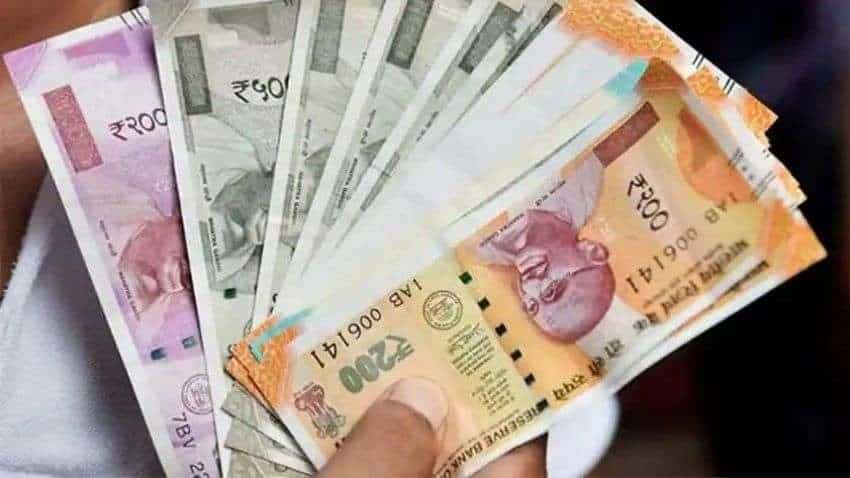Indian Currency: Security features of banknotes in circulation- Security thread, colour shifting ink, angular bleed lines and others- Details here
The Indian currency that is Rupee is available in two forms bank notes and coins. Some of the security features in banknotes, according to the Reserve Bank of India (RBI) include security thread, intaglio printing, see through register, among others.

Money is one of the most important things required by every single person to get what he needs. The name of the currency may change depending on the country one lives but the importance remains the same.
The Indian currency that is Rupee is available in two forms bank notes and coins. Bank notes are printed at four currency presses, two of which are owned by the Government of India through its Corporation, Security Printing and Minting Corporation of India Ltd. (SPMCIL) and two are owned by the Reserve Bank, through its wholly owned subsidiary, Bharatiya Reserve Bank Note Mudran Private Ltd. (BRBNMPL).
See Zee Business Live TV Streaming Below:
While coins are minted in four mints owned by SPMCIL. The coins are issued for circulation only through the Reserve Bank in terms of Section 38 of the RBI Act.
Here are some of the security features in banknotes, as per RBI which one can know:
1. Security thread: The silver coloured machine-readable security thread in Rs 10, 20 and 50 denomination banknotes is windowed on front side and fully embedded on reverse side. The thread fluoresces in yellow on both sides under ultraviolet light. The thread appears as a continuous line from behind when held up against light.
Rs 100 and above denomination banknotes have machine-readable windowed security thread with colour shift from green to blue when viewed from different angles. It fluoresces in yellow on the reverse and the text will fluoresce on the obverse under ultraviolet light.
2. Intaglio printing: The portrait of Mahatma Gandhi, Reserve Bank seal, Guarantee and promise clause, Ashoka Pillar emblem, RBI’s Governor's signature and the identification mark for the visually impaired persons are printed in intaglio in denominations Rs 100 and above.
3. See through register: On the left side of the note, a part of the numeral of each denomination is printed on the obverse (front) and the other part on the reverse. The accurate back to back registration makes the numeral appear as one when viewed against light.
4. Water mark and electrotype watermark: The banknotes contain the portrait of Mahatma Gandhi in the watermark window with a light and shade effect and multi-directional lines. An electrotype mark showing the denominational numeral in each denomination banknote also appears in the watermark widow and these can be viewed better when the banknote is held against light.
5. Colour shifting ink: The numeral 200, 500 and 2000 on the Rs 200, Rs 500 and Rs 2000 banknotes are printed in a colour-shifting ink. The colour of these numerals appears green when the banknotes are held flat but would change to blue when the banknotes are held at an angle.
6. New numbering pattern: The numerals in both the number panels of the banknotes are in ascending size from left to right while the first three alpha-numeric characters (prefix) will remain constant in size.
7. Angular bleed lines and increase in the size of identification marks: Angular Bleed Lines have been introduced in banknotes - 4 lines in 2 blocks in Rs 100, 4 angular bleed lines with two circles in between in Rs 200, 5 lines in 3 blocks in Rs 500, 7 in Rs 2000. In addition, the size of the identification marks in denominations Rs 100 and above have been increased by 50 percent.
Get Latest Business News, Stock Market Updates and Videos; Check your tax outgo through Income Tax Calculator and save money through our Personal Finance coverage. Check Business Breaking News Live on Zee Business Twitter and Facebook. Subscribe on YouTube.
04:04 PM IST











 RBI may face tougher path in February rate cut as Fed reshaped global monetary policy expectations: Report
RBI may face tougher path in February rate cut as Fed reshaped global monetary policy expectations: Report RBI raises collateral-free agricultural loan limit to Rs 2 lakh to aid farmers
RBI raises collateral-free agricultural loan limit to Rs 2 lakh to aid farmers 26th RBI Governor Takes Charge: Sanjay Malhotra sets sights on stability, growth, and trust
26th RBI Governor Takes Charge: Sanjay Malhotra sets sights on stability, growth, and trust How economists view RBI's CRR cut, status quo on rates & stance
How economists view RBI's CRR cut, status quo on rates & stance RBI adds 27 tonnes gold to country's reserve in October: WGC
RBI adds 27 tonnes gold to country's reserve in October: WGC